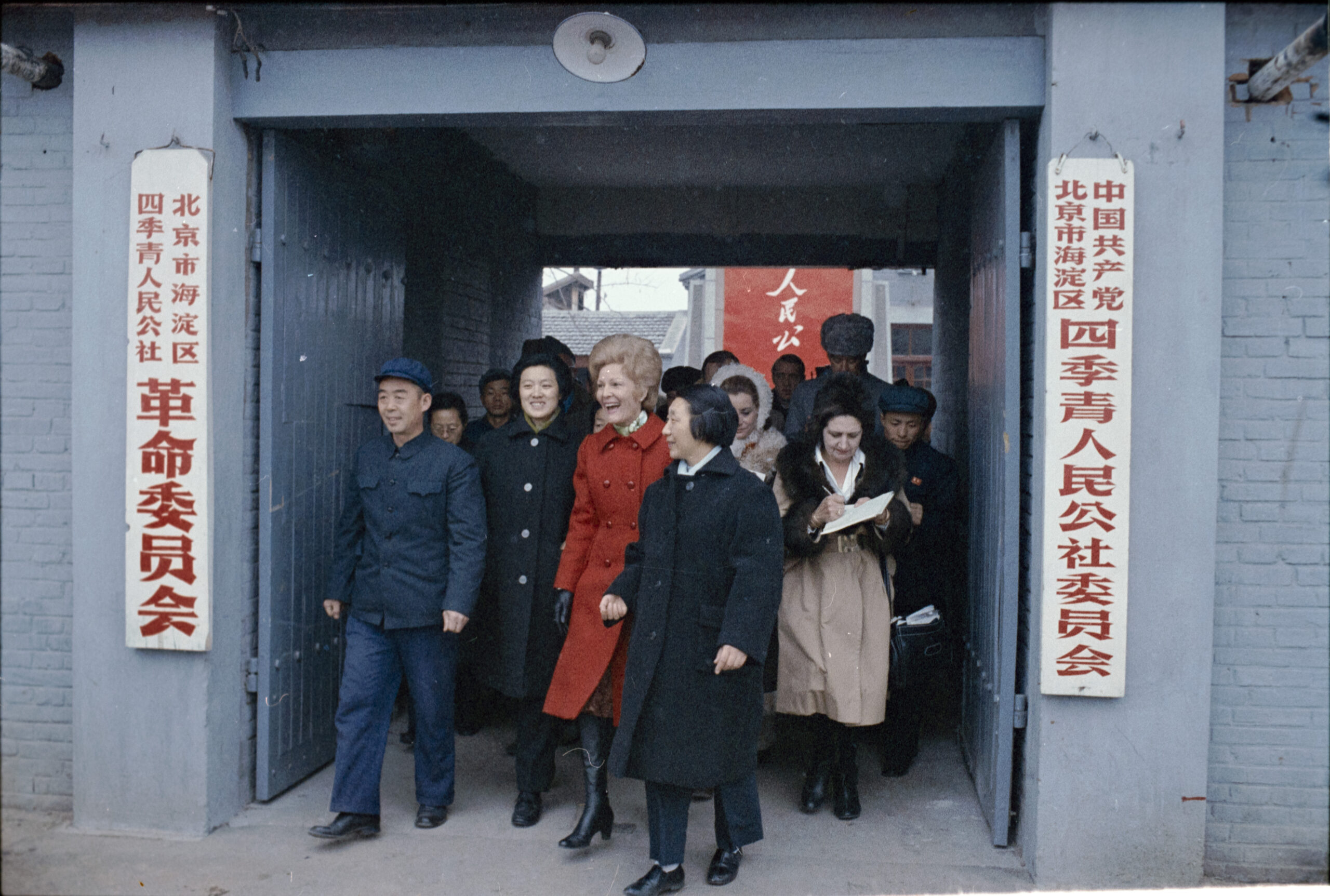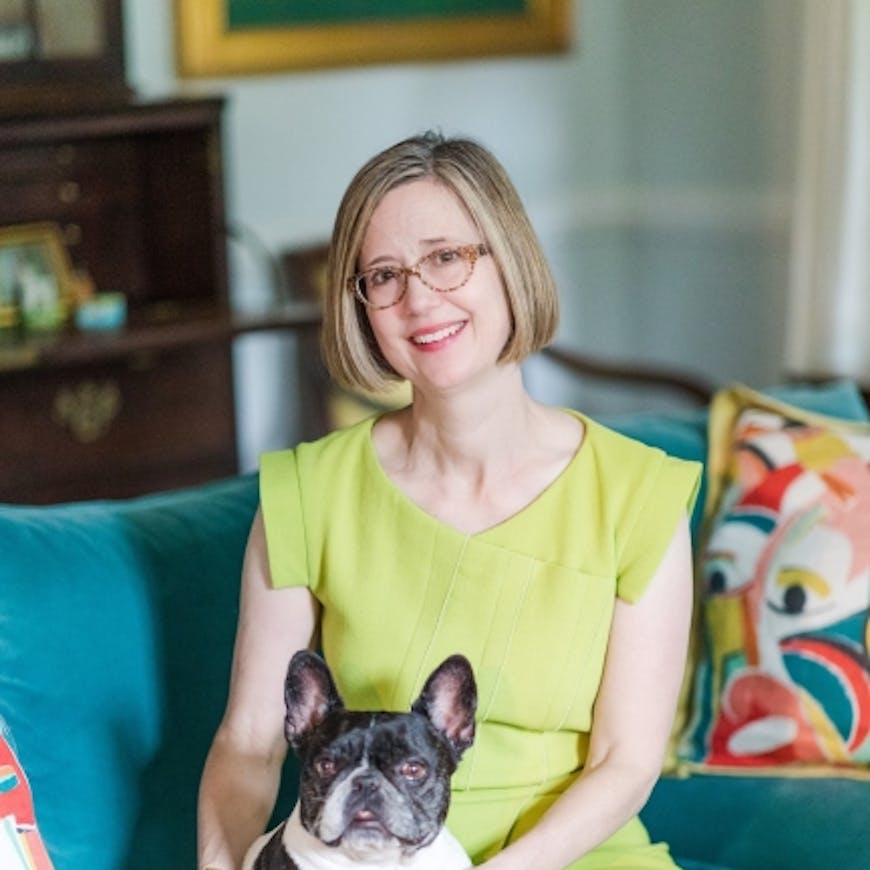by Heath Hardage Lee
As spring came to Washington in 1972, there was little rest for First Lady Pat Nixon. Her recent solo diplomatic successes in Peru and Africa were now imprinted in the public consciousness. President Nixon wanted his wife as part of his diplomatic team on yet another critically important trip. Secret negotiations had gone on for more than two years between National Security Advisor Henry Kissinger and Chinese Premier Chou En-lai as the U.S. was seeking a normalization of relations with China. It had taken delicate conversations and years of work, but on July 15, 1971, President Nixon went on live television to announce he had accepted the invitation of Chou En-lai to visit the PRC and that he would “seek the normalization of relations between the two countries and also…exchange questions of concern to the two sides.”

The First Lady felt strongly that she should be part of the historic visit. “Pat lobbied publicly and privately to accompany her husband on the trip, telling reporters, “’I’m putting my name on the sign-up list.’” According to presidential aide Dwight Chapin, the Chinese were initially resistant to the First Lady’s presence on the trip. “Initially the Chinese made clear that they did not expect, or even necessarily want Mrs. Nixon to come. The problem, we knew, was that Chou en-Lai’s wife was never seen, and Jiang Qing, ‘Madame Mao’ was a virulent anti-American.” However, Chapin claims that “The President wanted Mrs. Nixon to be there with him, and she wanted to be there; she was actually insistent on it.” As always, the First Lady did her homework, attending intensive briefings with Kissinger and his team, studying up on Chinese culture and language and reading anything she could about the country and its history.
When Pat stepped off Air Force One on a frosty late February day in 1972, her clothes made an impression before she herself said a word. Historians agree that Pat’s bright red wool coat lined with nutria fur soon became iconic. As she deplaned, she provided a colorful focal point set against the grey tarmac of the Chinese airstrip. While President Nixon, Kissinger and their team met with Chou En-lai and other high ranking communist officials, behind closed doors, the world watched Pat Nixon on television. Her every move in China was seen by millions all over the world. She was the “face” of the Nixon administration and the way people connected to the historic opening of China to the West.
The energetic and perfectly coiffed First Lady walked with vigor and energy, never seeming tired or disinterested. Her hostesses were made up of high-ranking officials in the Communist party, including the wives of Mao Zedong and Chou-en-Lai. Just as she had done in other communist countries, the First Lady’s friendly warm nature broke ideological barriers. “At the Shanghai banquet, the wives of some of the Chinese leaders hugged her and told her to return.” During her stay in Peking (now Beijing), Pat toured the Evergreen People’s Commune, an acupuncture clinic, Chinese classrooms, the Peking Summer Palace, the Peking Children’s Hospital, and the Peking Hotel on her own, as well as the Ming Tombs and the Great Wall with her husband. Despite her packed schedule, Pat subsisted on a meagre diet of green tea and tangerines during the day to make room for multi-course evening feasts with her Chinese hosts. Perhaps Pat’s most significant diplomatic coup would take place during one of these banquets on her first evening in Peking. This unexpected triumph involved the acquisition of a pair of adorable creatures who would eventually help found a furry dynasty in the United States within the confines of the Washington’s National Zoo. The first night of her Chinese visit, Pat was seated next to Premier Chou En-lai and noticed a beautifully decorated cylindrical cigarette tin adorned with pandas at her place.
“Aren’t they cute?” she said as she picked up the tin. “I love them.”
Zhou replied: “I’ll give you some.”
“Cigarettes?” she asked.
“No,” Zhou said. “Pandas.”
At the end of the trip, the Premier made good on his promise, sending two giant Chinese pandas to the National Zoo as a thank you to the Nixons. The 18-month-old pair were named Hsing-Hsing (male) and Ling-Ling (female). They would begin a family and have five cubs, though sadly none lived more than a few days. However, other pandas would arrive from China to take their place and eventually four cubs would be born in captivity at the zoo. This diplomacy lives on today through other Chinese pandas’ descendants there. Later partnerships with China would result in panda exchange programs at three other zoos in the United States. In 2022, the National Zoo’s Director Brandie Smith, “praised Pat Nixon for raising the issue of pandas with Zhou. “She took an opportunity to make this comment and turn it into something else,” Smith said. “For me, it’s the power of one woman’s voice.” She added. “I love that fact that this is all the result of a woman speaking up.”
On June 28, 2024, two new pandas, Yun Chuan and Xin Bao arrived at the San Diego Zoo from their home in China’s Sichuan province. They are the first panda pair to enter the United States in 21 years. The arrival of the pair signals a thaw in relations between the U.S. and China after a frosty period between the two countries. Pat Nixon’s global diplomatic prowess of the early 1970s, on display in Peru, Africa, and then in China proved that she was much more than just window-dressing: she was a diplomatic force to be reckoned with. In the case of China, her presence alone had helped breach the “great wall” between the two countries and faciliate a new phase of Chinese American relations. Even after more than 50 years, while other forms of diplomacy have failed, Pat Nixon’s “Panda Diplomacy” is a durable tradition that not only melts hearts, but also helps keep the doors of détente open.
Adapted from The Mysterious Mrs. Nixon by Heath Hardage Lee.

Heath Hardage Lee is an award-winning historian, biographer, and curator. Heath’s second book, The League of Wives is being developed into a television series. Heath and her work have been featured on the Today Show, C-Span, and on the Smithsonian Channel’s America’s Hidden Stories. She also writes about history and politics for publications such as Time, The Hill, The Atlantic and White House History Quarterly. She lives in Roanoke, Virginia, with her husband Chris, her children Anne Alston and James, and her French bulldog Dolly Parton.
